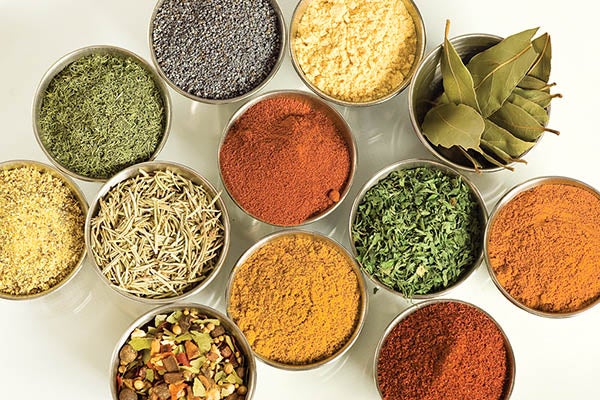Say ‘no more’ to plain, boring health food
Published 2:21 pm Tuesday, December 30, 2014
Dietician’s Digest by Emily Schmidt
As a registered dietitian, I frequently hear eating healthy is boring. People say, “If it tastes good, it must be bad for you.”
I’m here to declare this is far from the truth! Eating healthy should never be boring, but instead delicious and an overall positive experience. By learning how to cook and prepare items to actually make them taste good, you can definitely have fun with healthy eating.
It seems improper cooking methods and inadequate flavoring are the main reasons people say they don’t like a food. Of course, sometimes you genuinely do not care for a certain food, but it’s always a good idea to give it a second chance!
To take healthy foods from “blah” to “yum,” add spices, herbs and seasonings such as garlic powder, oregano, basil, red pepper, ginger, cumin and so many more. A plain, oven-baked chicken breast can become more interesting with some basil, parsley, garlic and onion powders, and black pepper.
Besides experimenting with new seasonings, try a new cooking method — sautéing, baking, grilling, roasting or anything other than simply boiling on the stove. Keep in mind frying will add more calories and should not be used frequently. Toss broccoli or cauliflower florets in a bowl with olive oil and seasonings of your choice — perhaps garlic powder and pepper, or a salt-free seasoning blend.
Spread them on a cookie sheet, and bake for at least 20 minutes in the oven at 450 degrees Fahrenheit or until crispy. Try this with various vegetables that you like — or with ones you think you don’t like!
Look up new recipes, utilize your cookbooks. Get creative in preparing healthy foods in a new way. You might find you actually do enjoy green beans or mushrooms if you sauté them with a little olive oil and seasoning.
Keep in mind healthy doesn’t necessarily mean fat-free. Fat does provide good nutrition for us, especially heart healthy unsaturated fats such as those found in fish, nuts and seeds, avocado and oils (canola, olive and peanut are best). A small amount of fat can add flavor to a dish, and even help to absorb certain nutrients. Fat does add calories, however, so don’t be too liberal with portion sizes. Do realize that approximately 30 percent of your calories should come from mainly unsaturated fats.
Combination dishes are a great way to experiment with new or familiar foods, or if you don’t enjoy a certain food on its own. Casseroles, soups, pizza and stir-fry are all dishes that can be made more interesting with vegetables, beans or additional herbs and spices. Add a bag of frozen mixed vegetables to the chicken and noodle casserole you normally make, or top your pizza or scrambled eggs with fresh green peppers, onions and mushrooms. Frozen vegetables and fruits typically have just as many nutrients as fresh, since they are frozen at their peak of freshness.
The first step is to understand eating healthy is not equivalent with boredom. Think outside of the box, step away from your comfort zone and have fun experimenting with recipes, seasonings and new cooking methods.
I challenge you to “make over” some of the foods you think you don’t like. There is so much more to cooking and eating than simply boiling or just heating and serving, and it’s up to you to make things interesting! For more tips or ideas, contact a registered dietitian.
An appointment with an Albert Lea Mayo Clinic Health System dietitian can be made at 507-379-2121 (please check with your insurance company for coverage).
Albert Lea resident Emily Schmidt is a registered dietitian at Mayo Clinic Health System in Albert Lea. She grew up in Rose Creek and enjoys cooking, reading and spending time outdoors with family.







